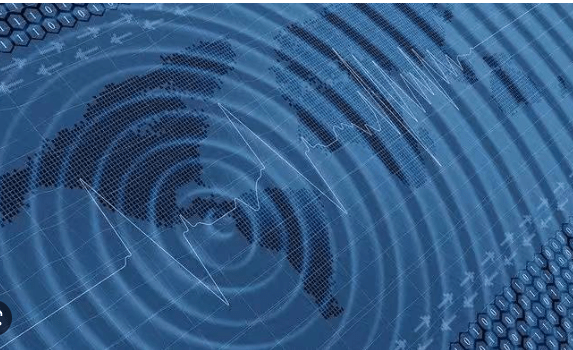Gravity Deformation Caused by Earthquakes


The phenomenon of thunder and lightning has long been a subject of fascination and study for humans. One of the ways people have attempted to measure the distance of a thunderstorm is by counting the time between a lightning strike and the resulting thunderclap. This technique, while not exact, can provide a reasonable estimate.
When lightning strikes, it travels at the speed of light, which is incredibly fast and almost instantaneous. Thunder, on the other hand, moves at a much slower pace, traveling at around 340 meters per second. Therefore, the time between a lightning strike and thunder provides a window into the distance between the observer and the location of the lightning. If the time between lightning and thunder is short, then the observer is likely to be close to the lightning. If, however, the time gap is longer, then the observer is further away from the storm and the sound takes longer to reach them.
Through observing the time between lightning and thunder, people have learned to better understand the power and distance of thunderstorms. This technique has also led to the development of advanced tools for measuring the distance of a storm, such as lightning detection equipment and radar technology. Despite the advancements in technology, however, the time-honored tradition of estimating the distance of a storm through the time between lightning and thunder remains a beloved pastime for many storm-watchers around the world.
Earthquakes also send out signals that propagate at the speed of light (300,000 kilometers per second) and can be recorded long before the relatively slow seismic waves (about 8 kilometers per second). However, the signals that travel at the speed of light are not lightning bolts, but sudden changes in gravity caused by a shift in the earth’s internal mass. Only recently, these so-called PEGS signals (PEGS = prompt elasto-gravity signals) were detected by seismic measurements. With the help of these signals, it might be possible to detect an earthquake very early before the arrival of the destructive earthquake or tsunami waves.
However, the gravitational effect of this phenomenon is very small. It amounts to less than one billionth of the earth’s gravity. Therefore, PEGS signals could only be recorded for the strongest earthquakes. In addition, the process of their generation is complex: they are not only generated directly at the source of the earthquake, but also continuously as the earthquake waves propagate through the earth’s interior.
Until now, there has been no direct and exact method to reliably simulate the generation of PEGS signals in the computer. The algorithm now proposed by the GFZ researchers around Rongjiang Wang can calculate PEGS signals with high accuracy and without much effort for the first time. The researchers were also able to show that the signals allow conclusions to be drawn about the strength, duration and mechanism of very large earthquakes. The study was published in the journal Earth and Planetary Science Letters.

An earthquake shifts the rock slabs in the earth’s interior abruptly, and thus changes the mass distribution in the earth. In strong earthquakes, this displacement can amount to several meters. “Since the gravity that can be measured locally depends on the mass distribution in the vicinity of the measuring point, every earthquake generates a small but immediate change in gravity,” says Rongjiang Wang, scientific coordinator of the new study.
However, every earthquake also generates waves in the earth itself, which in turn change the density of the rocks and thus the gravitation a little bit for a short time—the earth’s gravity oscillates to some extent in sync with the earthquake. Furthermore, this oscillating gravity produces a short-term force effect on the rock, which in turn triggers secondary seismic waves. Some of these gravitationally triggered secondary seismic waves can be observed even before the arrival of the primary seismic waves.
“We faced the problem of integrating these multiple interactions to make more accurate estimates and predictions about the strength of the signals,” says Torsten Dahm, head of the section Physics of Earthquakes and Volcanoes at GFZ. “Rongjiang Wang had the ingenious idea of adapting an algorithm we had developed earlier to the PEGS problem—and succeeded.”

The development of a new algorithm has shown potential for predicting potential tsunamis caused by strong earthquakes off the coast. This method involves evaluating changes in gravity many hundreds of kilometres away from the epicentre of an earthquake. Researchers have applied this new algorithm to the Tohoku quake in Japan in 2011, which caused the Fukushima tsunami. The measurements gathered were consistent and provided certainty for predicting other earthquakes and potential applications for the PEGS signals. However, current measuring instruments lack sensitivity and the interference signals make it difficult for PEGS signals to be directly integrated into a functioning tsunami early warning system. Despite the limitations, this new development shows promise for future advancements that could potentially save lives.








